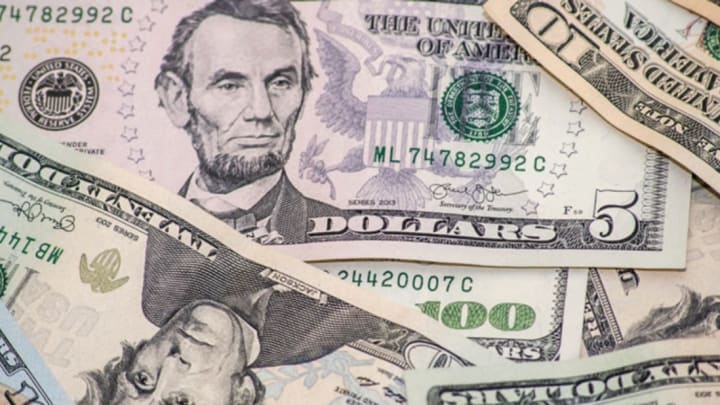The color of our money is so iconic, the word “green” has become synonymous with stacks of cash. But that's hardly standard for currency around the world—in fact, many of the paper notes used abroad make ours look rather drab in comparison. So how did the hue end up on our bills in the first place?
The first evidence of the color green being used in federal currency dates back to 1861. Before then, the Continental Congress had experimented with issuing notes called “continentals” to fund the Revolutionary War, but they were printed at a such a high volume that they quickly lost their value. These new green notes were printed for a similar reason, but this time it was the Union side of the Civil War that needed financing.
Private, state-chartered banks had been distributing their own paper money for decades, which led to a lack of cohesion in terms of the denominations and designs in circulation. In order to prevent the new bills from being photographed for counterfeit purposes, their back sides were printed with green ink said to be made from palm juice (the cameras of the era could only photograph in black-and-white). This earned them the nickname “greenbacks,” and made the U.S. dollar instantly recognizable.
The green coloring persevered all the way until 1929 when the government began instituting standard shapes and designs for currency. The size of the bills was reduced in order to cut manufacturing costs, and when deciding on uniform designs for each of the denominations, they stuck with the classic green hue across the board.
The decision to keep the original color was largely a practical one. According to the U.S. Bureau of Printing and Engraving, the ink was abundant and highly resistant to chemical and physical changes, and the color itself was a smart fit because it symbolized stability. Green also signifies life and growth—two qualities a nation wouldn’t mind people associating with their economy.
